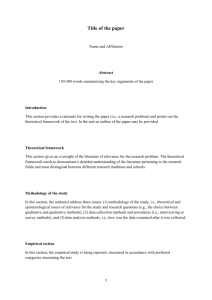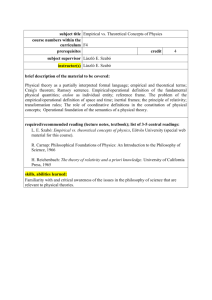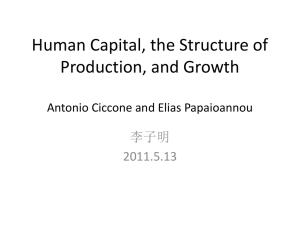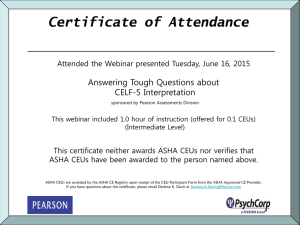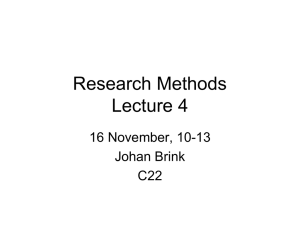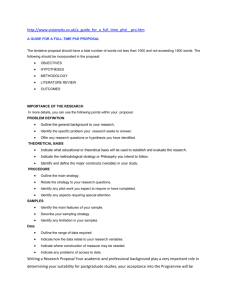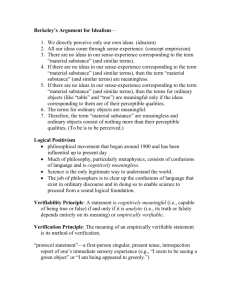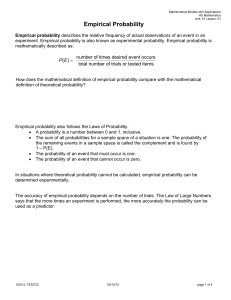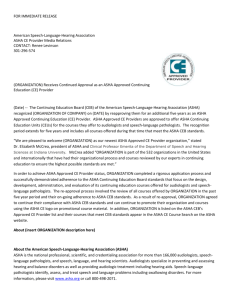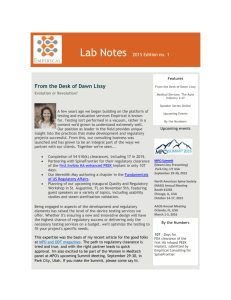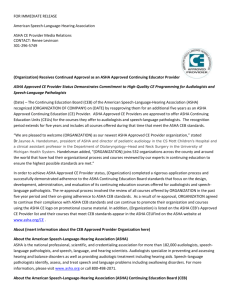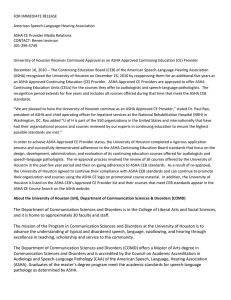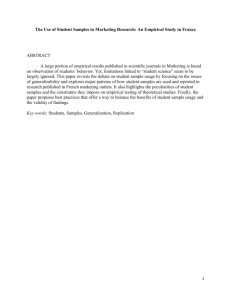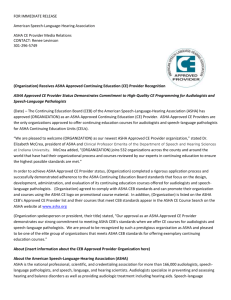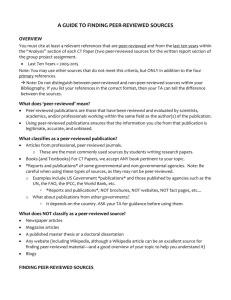ASHA Guidance on Infusing Evidence into Continuing Education
advertisement
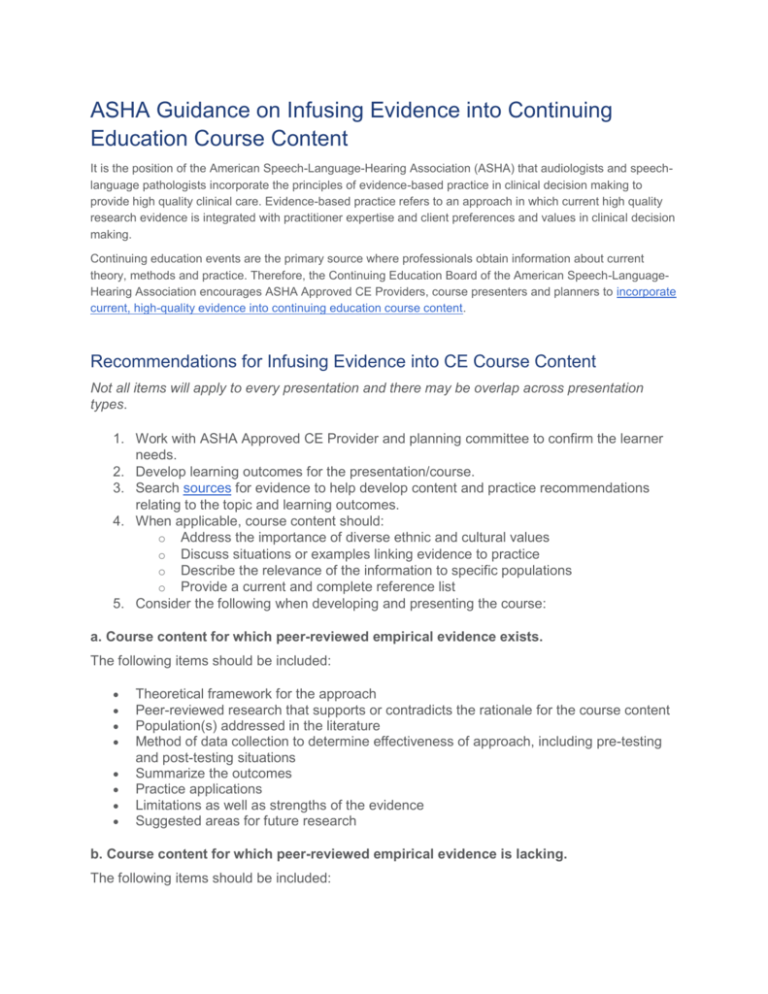
ASHA Guidance on Infusing Evidence into Continuing Education Course Content It is the position of the American Speech-Language-Hearing Association (ASHA) that audiologists and speechlanguage pathologists incorporate the principles of evidence-based practice in clinical decision making to provide high quality clinical care. Evidence-based practice refers to an approach in which current high quality research evidence is integrated with practitioner expertise and client preferences and values in clinical decision making. Continuing education events are the primary source where professionals obtain information about current theory, methods and practice. Therefore, the Continuing Education Board of the American Speech-LanguageHearing Association encourages ASHA Approved CE Providers, course presenters and planners to incorporate current, high-quality evidence into continuing education course content. Recommendations for Infusing Evidence into CE Course Content Not all items will apply to every presentation and there may be overlap across presentation types. 1. Work with ASHA Approved CE Provider and planning committee to confirm the learner needs. 2. Develop learning outcomes for the presentation/course. 3. Search sources for evidence to help develop content and practice recommendations relating to the topic and learning outcomes. 4. When applicable, course content should: o Address the importance of diverse ethnic and cultural values o Discuss situations or examples linking evidence to practice o Describe the relevance of the information to specific populations o Provide a current and complete reference list 5. Consider the following when developing and presenting the course: a. Course content for which peer-reviewed empirical evidence exists. The following items should be included: Theoretical framework for the approach Peer-reviewed research that supports or contradicts the rationale for the course content Population(s) addressed in the literature Method of data collection to determine effectiveness of approach, including pre-testing and post-testing situations Summarize the outcomes Practice applications Limitations as well as strengths of the evidence Suggested areas for future research b. Course content for which peer-reviewed empirical evidence is lacking. The following items should be included: Theoretical framework for the approach Empirical research upon which the approach or techniques may be based Policy papers that provide expert consensus Method of data collection to determine effectiveness of approach, including pre-testing and post-testing situations Description of population, including demographic information Potential risks or adverse consequences in addition to potential benefits Potential practice, ethical or legal consequences and issues Emphasis on the lack of peer-reviewed empirical evidence c. Course content presenting original research findings or findings from published literature. (e.g., reports of empirical investigations, systematic reviews, meta-analyses, consensus statements, clinical practice guidelines, and quality improvement data). The following items should be included: Theoretical foundations Specific objectives/questions Specific population(s) to whom the findings apply Validity, reliability, and rigor of the methods employed, including attempts to control for subjective bias Both the statistical significance of the findings and also the clinically relevant magnitude of the changes demonstrated Limitations as well as strengths of the evidence d. Course content focusing on current federal, state, professional, or institutional policy or regulatory issues. The following items should be included: Legal foundations and precedents for the issue Published literature, such as empirical research, theoretical work or expert consensus, that may have influenced policy Data from institutions (e.g., schools, government or regulatory agencies) that influenced policy, such as Medicare claims Influence of client advocacy on the development of policy History and possible future directions for this policy Political influences on policy Scope of practice, licensure, or other



